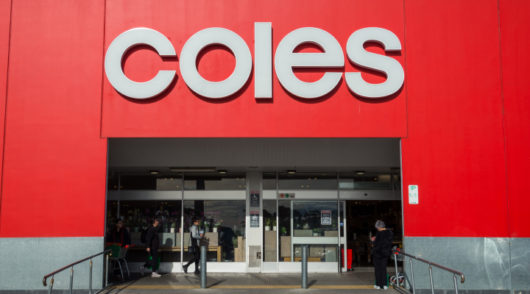 There’s been some respite for food retailers while other parts of the sector continue to struggle as indicated by the latest Australian Bureau of Statistics (ABS) figures.
There’s been some respite for food retailers while other parts of the sector continue to struggle as indicated by the latest Australian Bureau of Statistics (ABS) figures.
Retail trade growth in April was up 3.08 per cent year-on-year in the latest seasonally adjusted figures.
Australian Retailers Association executive director, Russel Zimmerman, said although April’s growth figure is quite modest, the past few months have been difficult for the industry as they continue to face a challenging operating environment.
April saw positive results for household goods retailing (0.67 per cent), Cafes, restaurants and takeaway food services (5.01 per cent), Food retailing (4.29 per cent), Clothing, footwear and personal accessory retailing (0.27 per cent), Other retailing (3.67 per cent) and Department stores (0.13 per cent).
ABS figures showed strong signs of growth for categories including Food retailing (4.29 per cent), Liquor (7.31 per cent) and Takeaway Food Services (6.16 per cent). Cafes and Restaurants have also picked up since March, showing a 4.19 per cent growth year-on-year due to family-based festivities over the Easter long weekend.
“With a number of public holidays in April, consumers enjoyed their time out at cafes and bars with friends and family, especially over the Easter period,” said Zimmerman.
However the industry continues to demonstrate real weakness in discretionary spend categories with Household Goods (0.67 per cent), Hardware & Building (-0.95 per cent) and Electrical Good Retailing (-0.33 per cent) showing signs for concern.
“As the retail sector is experiencing economic transformation, we continue to see some parts of the industry struggling,” said Zimmerman.
“There has been a significant change in consumer spending habits as the Government’s tax increases after the Budget have proved counterproductive to retail growth and consumers are holding onto their pockets tightly,” said Zimmerman.
“It is clear the Australian retail industry is going through a structural change, and it will only become stronger once growth returns to the sector.
“We’re hoping to see a spike in discretionary spend when mid-year sales hit in June, and look forward to seeing the whole industry receive a strong trade in May.”
Online retail turnover contributed 3.4 per cent to total retail turnover in original terms.
National Retail Association chief executive Dominique Lamb said the figures released today are indicative that though the retail sector is slowly picking up, the gains are minimal and it is still very much operating within a challenging environment.
“The lack of consumer confidence within the Australian retail sector continues to gain momentum,” she said.
“The introduction of Amazon, coupled with the discussion on penalty rates and trading hours has created a cloud of uncertainty surrounding the industry for consumers and retailers alike.
“The NRA predicts that retail trade figures will increase alongside consumer confidence with the Reserve Bank of Australia’s decision in May to hold interest rates at an historic low of 1.5 per cent.”
Within state categories, Victoria (4.19 per cent), Queensland (4.05 per cent) and South Australia (4.00 per cent) take the lead with solid year-on-year growth figures. Australian Capital Territory (3.73 per cent), Tasmania (2.76 per cent) and New South Wales (2.60 per cent) all showed moderate to good increases for the period. While spending weakened in Western Australia (-0.05 per cent) and the Northern Territory (0.61 per cent).
MONTHLY RETAIL GROWTH (March 2017– April 2017 seasonally adjusted) Total sales (0.95 per cent).
Household goods retailing (0.35 per cent), Other retailing (0.56 per cent), Food retailing (1.19 per cent), Clothing, footwear and personal accessory retailing (0.27 per cent), Cafes, restaurants and takeaway food services (1.12 per cent) and Department stores (2.47 per cent).
Northern Territory (1.79 per cent), South Australia (1.11 per cent), Australian Capital Territory (0.91 per cent), Victoria (1.02 per cent), Tasmania (1.18 per cent), Western Australia (0.43 per cent), New South Wales (0.12 per cent) and Queensland (2.41 per cent).
Access exclusive analysis, locked news and reports with Inside Retail Weekly. Subscribe today and get our premium print publication delivered to your door every week.





